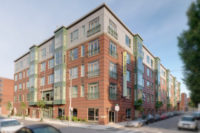Long-Term Greening

The development of a green building is a comprehensive process that involves innovative thinking and a significant amount of creative design, but the greening process of our collective built environment doesn’t just end once the construction of a new LEED building is complete.
It can be easy to overlook the essential task of establishing a comprehensive plan for the building’s ongoing systems operation and maintenance. In many ways, this form of short-term thinking can serve to undercut one of the fundamental goals of the green building movement. Yes, it is highly commendable for a new project to reach for the highest possible level of LEED certification, but the effect of this accomplishment is diminished without an equally sizable commitment to ensuring that our built environment is being run in an innovative, environmentally conscious way after completion.
The U.S. Green Building Council is trying to help the green building community avoid falling into a false sense of green security by establishing a culture in which architectural firms and new building consultants recognize their ongoing responsibility to a project once its physical construction has been completed. Now is the time for green building inhabitants, architects and consultants to fully realize that their work does not conclude once the doors to a new LEED-certified project open.
This is the line of thinking that produced the USGBC’s new LEED O+M Starter Kit, a tool designed to blaze a path for green building projects to keep on going, pushing the green envelope and ensuring that each LEED building’s performance endures for a lifetime.

The Starter Kit is a set of four pilot credits including all of the LEED v4 for Operations and Maintenance (O+M) policy-based prerequisites that are necessary to bring a LEED for Building Design and Construction (BD+C) certified project directly into the first stages of certifying the building’s ongoing performance. These pilot credits emphasize onsite maintenance, building systems management, waste and cleaning, and pest management—operational dimensions of a building’s life cycle that are fundamental to the establishment of a truly green ecosystem within your built environment.
They are also all part of what we call the establishment requirements of LEED O+M. For LEED v4, and to support recertification, the rating system has been divided between establishment and performance requirements. Many establishment requirements—physical assets and policies that are documented and approved once and are generally not subject to substantial changes over time—are included in the BD+C rating systems. A few good examples of these types of establishment requirements are those requirements related to water fixture efficiency, lighting controls and smoking prohibition. By providing the remaining establishment policy requirements not already included in the BD+C program, the O+M starter kit challenges building managers, architects and project designers to go beyond the BD+C rating systems.
In this way, the LEED O+M Starter Kit has been designed as a value add to BD+C applications, allowing projects to move directly into O+M. Once a building has been occupied for at least a year and has a full year of energy data, the project can be submitted for full LEED v4 O+M certification. (Note: there are many other credits that must also be documented in order to have enough points to fully certify for LEED v4 O+M.)
Feel free to contact USGBC if you need additional help figuring out this process, as each project that adopts the Starter Kit will be offered an optional conference call with GBCI reviewers to help streamline the transition from a BD+C certification to an O+M certification.
In essence, what we have created is a new process that will enable project developers to follow up with their projects over time, ensuring that buildings are running efficiently and sustainably for years to come. The benefits of viewing green building projects from this perspective are not purely altruistic either; they also add what could be a highly valuable additional source of revenue for your firm.
Looking for a reprint of this article?
From high-res PDFs to custom plaques, order your copy today!





.jpg?height=200&t=1722601325&width=200)